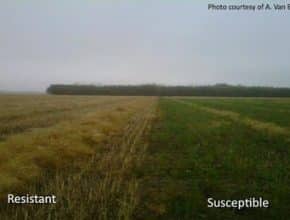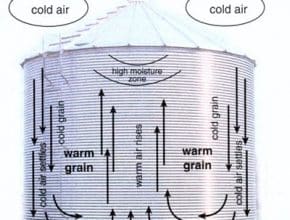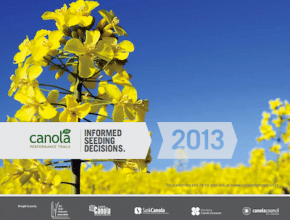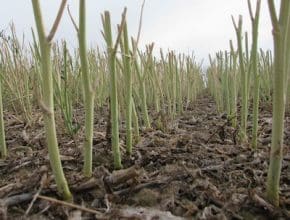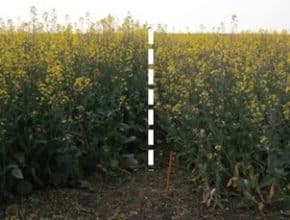Home / Canola Watch / Page 225
-
Clubroot resistance is an important part of clubroot management, and growers are advised to start using clubroot-resistant varieties as soon as clubroot is identified in their area. This will help keep clubroot at low levels in fields, and reduce the risk of selecting for resistant clubroot races…
-
Moisture migration in a canola bin peaks when the temperature difference between inside and outside the bin is high. If canola in the bin is -20C and the outside air warms up for a week, this can increase air flow and moisture concentration inside the bin…
-
Dr. Vincent Amanor-Boadu with the topic, “Preparing for the Future Food Consumer.” Kevin Bleyer on the topic, “The Real Story Behind Writing Fake News.” Michael Enright on “Current Affairs.” Anne Frick on “Supply and Demand.” Dr. John Izzo on “Sustainability.” Dr. Jim Painter on “Sensory Nutrition.” Cami Ryan on “How Bad Sciences gets Good Legs.” Ray Zahab on “Challenge. Distance…
-
Shine up your boots, bedazzle your denim and mosey on down The Old Spanish Trail to Rio Cibolo Ranch to wrap up the convention with a rodeo, dinner and drinks,……
-
The Canola Watch 2013 exam is posted and ready. Certified Crop Advisors (CCAs) and Certified Crop Science Consultants (CCSCs) who achieve 70% will get 6.5 credits. Ultimate Canola Challenge results show that many of the additive products tested would not have provided an economic return — based on 2013 results. The challenge will likely be repeated in 2014, which will…
-
1. Paperwork. Go through notes you took through the 2013 growing season and get them organized for next year. Look for patterns in 2013 yield maps. For example, can good areas and poor areas be explained and provide some specific management direction for 2014? 2. Consider how to work check strips into your farm for 2014. These are a good…
-
Meaningful seed comparisons usually have the following features: 1. It comes from at least 15-20 sites, ideally from more than one year. 2. Statistical analysis is performed on the data to test its reliability. This analysis will also identify real statistically-supported differences between treatments or varieties. 3. Trials should follow a protocol applied across all sites. Without a protocol, differences…
-
The ideal canola stand will have 7-10 plants per square foot. Canola needs a minimum of 4-5 plants per square foot, on average, to reach its yield potential. A few extra plants improves the chance of hitting yield targets, and allows for some plant loss to insects and disease. Canola with plant populations below 4-5 per square foot can still…
-
Clubroot resistance is an important part of clubroot management, and growers are advised to start using clubroot-resistant varieties as soon as clubroot is identified in their area. This will help keep clubroot at low levels in fields, and reduce the risk of selecting for resistant clubroot races…

